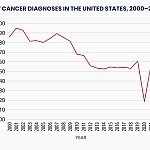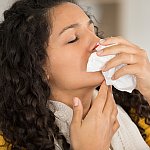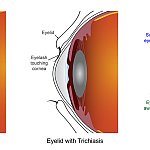
Researchers estimate that about
A diet consisting of mostly processed foods can increase a person’s risk for type 2 diabetes.
A recent study published in March 2023 reported that 60% of packaged food and beverages sold in the U.S. contain
Past studies have linked certain food additives to type 2 diabetes risk. For example, a study published in May 2024 found seven specific
Now, a new study recently published in the journal PLOS Medicine has found that two certain mixtures of common food additives can increase a person’s chance of developing type 2 diabetes.
For this study, researchers analyzed nutritional data from almost 109,000 adults, with an average age of about 43, who participated in the French NutriNet-Santé cohort between 2009 and 2023.
“In the past three decades the prevalence of type 2 diabetes has risen dramatically in most countries,” Mathilde Touvier, PhD, (she/her) team leader of the Nutritional Epidemiology Research Team CRESS-EREN at the National Institute for Health and Medical Research (Inserm/Inrae/Cnam/Université Sorbonne Paris Nord/Université Paris Cité) in France and lead author of this study told Medical News Today.
“Type 2 diabetes is a risk factor for several other chronic pathologies such as
— Mathilde Touvier, PhD
Scientists determined the types of food additives participants were exposed to through food composition databases and laboratory evaluations, as well as the mixtures of food additives they consumed.
“So far, research and safety evaluation of food additives has been conducted on a substance-by-substance basis, while in real-life, food additive mixtures are consumed by billions of people globally,” Marie Payen de la Garanderie, PhD student on the Nutritional Epidemiology Research Team CRESS-EREN at the National Institute for Health and Medical Research (Inserm/Inrae/Cnam/Université Sorbonne Paris Nord/Université Paris Cité) in France first author of the study explained to MNT.
“Some experimental studies have raised concerns about potential interactions between additives within mixtures and their potential impact on health — including metabolic health — but human epidemiological data are lacking. This is why our objective was to identify the main mixtures of food additives and to study their associations with type 2 diabetes incidence,” she said.
At the end of the study, researchers identified two specific mixtures of food additives correlated with an increased risk of developing type 2 diabetes.
One mixture featured emulsifier additives, including modified starches, pectin, guar gum, carrageenan, polyphosphates, and xanthan gum, as well as the preservative
“Most of these food additives are markers of ultra-processed foods — emulsifiers, artificial sweeteners, (and) dyes,” Touvier explained. “The mixtures observed here result both from the composition of foods containing multiple additives and the association of foods frequently consumed together. The food groups most correlated with one of the mixtures (mixture 2 in the study) were broth, dairy desserts, and fats and sauces.”
The second food additive mixture linked to an increased risk for type 2 diabetes included acidifiers and acid regulators such as citric acid, dyes including
“The food groups most correlated with ‘mixture 5’ were artificially sweetened soft drinks and other drinks,” Payen de la Garanderie said.
“To our knowledge, this study is the first to estimate the exposure to food additive mixtures in a large population-based cohort and investigate their link with type 2 diabetes incidence. These results suggest that food additives found in a wide variety of products and frequently consumed together may potentially represent a modifiable risk factor for type 2 diabetes prevention.”
— Marie Payen de la Garanderie, first author of the study
“They also suggest that it may be of interest to consider potential interaction/synergistic/antagonist effects when assessing the safety of food additives and call for a re-evaluation of regulations governing their use by the food industry, with the aim of enhancing consumer protection,” Touvier added. “They support public health recommendations to limit non-essential additives.”
MNT had the opportunity to speak with Mir Ali, MD, a board certified general surgeon, bariatric surgeon and medical director of MemorialCare Surgical Weight Loss Center at Orange Coast Medical Center in Fountain Valley, CA, about this study.
Ali commented that this was an interesting study showing how food additives can affect health.
“As society in general moves towards more processed foods and an increasing number of additives, it is important to understand how these additives can increase the risk for diabetes. Diabetes can be a devastating disease, and finding ways to prevent diabetes is very important,” he said.
“What would be helpful is to identify foods with the combination of additives that increase the risk for diabetes, and looking at how eliminating these foods affects diabetes risk,” Ali added.
As previous research shows that ultra-processed foods make up 50% or more of the dietary caloric intake of high-income countries, obviously many people are consuming food additives every day.
MNT asked Monique Richard, MS, RDN, LDN, a registered dietitian nutritionist and owner of Nutrition-In-Sight, for her top tips on how readers can cut back on the amount of food additives they consume, especially if they are prediabetic or are already at a high risk for type 2 diabetes.
“(Lean) on Mother Nature and your local farmers to consume more whole foods and less ‘shelf-stable’ packaged items that don’t have a label,” Richard suggested. “Hit the farmer’s market or grocer’s produce section and stock up on vegetables, herbs, fruits, (and) dry beans. Grab bulk foods such as nuts … (and) seeds.”
Richard also advised readers to explore simplified beverages like water, unsweetened tea, homemade lemonade, 100% juice, or carbonated basics like club soda with lemon and mint, and also to cook more.
“Recipes call for whole, real food as ingredients and synthetic manufactured fillers, enhancers, thickeners and preservatives are typically not needed for palatability. Savor food by adding flavor — add spices or play with variations of cuisine such as smoked paprika, curries, Spanish, Mexican or Thai flavors.”
— Monique Richard, MS, RDN, LDN
“We have plenty to worry about right now,” Richard continued. “Worry less about your health by investing in caring for your body and mind with quality nutrition as often as you can and make the best choices you are able to. It is also important to understand that awareness should not equate to obsessiveness, but the more you know, the clearer the choices become.”
“As Maya Angelou said, ‘Do the best you can until you know better— then when you know better, do better’,” she added.





